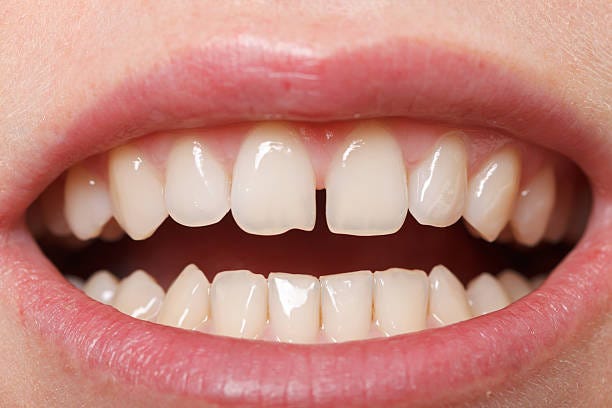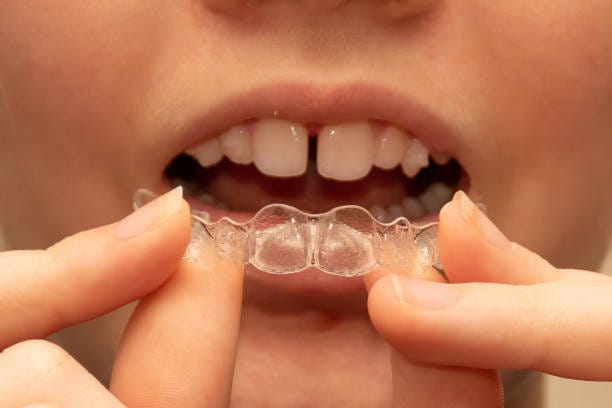Cracked or broken teeth are often the result of a person’s bite force, which may be caused by improper alignment or spacing of the tooth. Both children and adults who suffer from a condition called diastema may have been born without adequate space between their upper front teeth. They may even suffer from long gaps in their teeth, due to the width between certain teeth not properly aligning. In this case, there will also be room for food particles to get stuck between these gaps, whether they are big enough to affect speech or small enough to prevent speech issues.

Looking for how you can treat diastema at Dentist in Delhi? Then you are at the perfect place. Here we are going to discuss about a complete range of dental treatments.
What is a Diastema?
A diastema is a gap between two teeth. It occurs when there is space between the teeth, and it can take on any number of forms. A diastema may be present at the front of the mouth, or it may occur on either side of the mouth.
How Common is a Diastema?
A diastema is a gap between two teeth. It may be present at birth, or it can develop over time as teeth move into their proper positions.
A diastema is common in children and teenagers, and it is usually resolved by the time the child reaches adulthood. In adults, a diastema may be caused by tooth decay or gum disease; it can also be genetic.
Who Can Get a Diastema and Why?
It can be caused by genetics, but it can also be caused by other factors, such as tooth decay, trauma, or dental work.
There are a number of reasons why someone may have a diastema:
- Genetics: If your parents or siblings have one, you’re more likely to get one too.

-Tooth decay: If you’ve had cavities in the past, you may have lost some of the enamel around your teeth, which will make it easier for them to shift when eating certain foods or chewing gum. This can lead to gaps between your teeth.
-Trauma: If you’ve had an accident that damaged one or both of your front teeth, there’s a chance that they’ll overlap and create a gap between them. This happens with sports injuries as well as accidents where teeth are knocked out entirely.
-Dental work: If you’ve had braces or other dental work done on one or both of your front teeth, there’s a chance that they’ll overlap after treatment ends. This can also happen if you get crowns placed on top of existing teeth instead of having them drilled out then replaced with implants or bridges.
Why Does It Occur?
There are many causes of diastema, including:
• Genetics: If your parents have a gap between their teeth, you may be genetically predisposed to developing one as well.
• Pregnancy: During pregnancy, hormones can cause your face to swell and stretch out. This can lead to a gap between your teeth as well as other facial changes like acne and dry skin.
• Trauma: Damage to your teeth or gums can cause you to develop a gap between them.
• Bad habits: If you grind your teeth at night while sleeping or chew on pencils during class, these habits could result in a diastema over time.
• Dental work: If you’ve recently had dental work done on your teeth that required an implant or crown placement, this could also cause an area of space between them as they heal into place.
How Can It Be Fixed?
-Dental crowns: These can be placed on either side of the gap to close it up. They are somewhat expensive, but they will last for years and can help you feel more confident about your smile.
- Bonding: This method requires a Cosmetic dentist in Mumbai to fill in the gap with a composite material that matches the color of your teeth. Bonding may be used on its own or in conjunction with other methods like crowns or veneers. It is less expensive than some other options for treating diastemata and can last for several years if properly cared for.

-Veneers: Veneers are another option for closing gaps between teeth. They are thin shells of porcelain that fit over the front surface of your tooth and look like real teeth when finished being applied. Veneers can be extremely effective at treating diastemata because they cover all surfaces around where one tooth meets another one (which is usually where gaps occur). However, they are also very expensive and require that you undergo a procedure every few years to replace them when they wear out over time.
In short, a diastema helps naturalize your smile and make it more attractive. But where you get to reap the most benefit from this procedure is on a “day-to-day” basis — how your smile looks casually, in everyday settings. A diastema gives you that “I’m cool with my unique face” appeal, similar to braces or crooked teeth.
Comments
Post a Comment